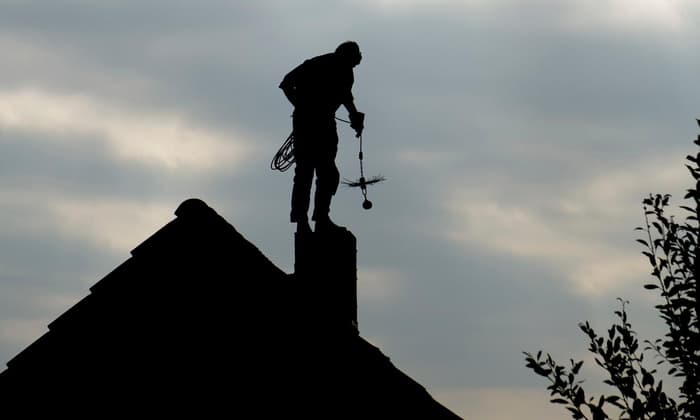Thinking about your home, have you recently taken a look at your chimney and fireplace system? Do you know of where there might be damage or leaking? As the homeowner, you cannot answer these questions with any certainty. To have that certainty, you should call a professional chimney company. Chimneys, especially those connected to a wood-burning fireplace, perform a critical job. These allow interior air to get into the fireplace sustaining fire and providing a channel to draw outside air. Below are common types of damages to be found on your chimney during a routine inspection.
Deterioration of Brick & Mortar
Over years of use, the brick and mortar that comprises the chimney structure can begin to deteriorate. Some early signs include cracks and crumbling, which can let in water, which does speed up the deterioration process. Freeze and thaw cycles cause water to expand and break apart the structure.
Stains on the Chimney Exterior
White stains usually come from salts left behind water evaporation. This water could be on the outside of the chimney, or it could have gotten into the structure. Black stains mean there is an excess amount of soot in the chimney that needs to be cleaned out. There are many other possible types of chimney stains, which need to be examined by a professional.
Buildup of Creosote
Creosote, smoke from burning wood, clings to and buildup on the inner surfaces of the chimney. An excessive amount of buildup can obstruct the airflow. This material increases potential chimney fires due to how combustible and flammable. A trained chimney sweep can perform a thorough cleaning to remove creosote and soot.
Damaged Chimney Crown
The chimney crown, located at the top, is a layer of the chimney that protects the bricks and mortar from rain damage. Crowns can crack and deteriorate over time, and when that happens, the bricks and mortar can begin soaking up rainwater, leading to damage as stated above.
Flashing Problems
Around the exterior of the chimney is flashing. This connects to the roof but where it connects to the roof can become warped or damaged, giving the water a clear path to travel down into the building materials of the home.
Faulty Dampers
Dampers that will not fully open or close will cause an air-flow problem during a fire and will allow outside air into the home, and vice-versa when a fire is not burning. Dampers can be cleaned or replaced if deemed necessary.
Rusted Chimney Cap
Chimney caps cover the opening of the chimney to protect against debris, small animals, and water, which can become rusted and begin to deteriorate. A damaged chimney cap needs to be replaced or repaired. These are only seven of the elements focused on during an inspection by a chimney professional. If it has been a while since your chimney has been swept or inspected, give AllStar a call at 888-807-9786 to schedule a thorough inspection and sweep.

